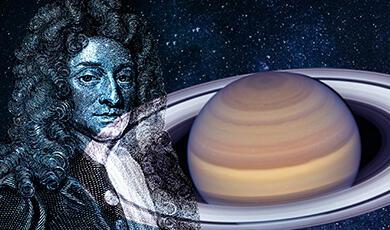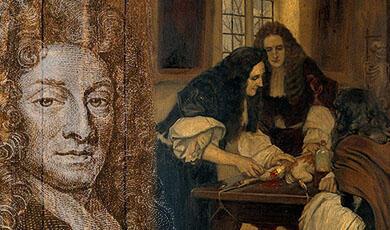Press release: Christopher Wren’s medical discoveries

Christopher Wren’s medical discoveries part of an Oxford ‘scientific research group’
Pioneered method to cannulate blood vessels
First intravenous drugs, fluid and blood, and first ‘resuscitation’
Embargo: 17 May 2023 6pm (UK time)
We would like to invite you to a lecture on Christopher Wren’s Medical Discoveries: the ‘Architect of Human Anatomy’ by Professor Jaideep Pandit, on Wednesday 17 May 2023 6pm (UK time) at Gresham College or online. In this lecture, Professor Pandit will explore Wren’s contributions to biomedical science, in particular his discoveries in anatomy – such as his illlustrations of the flow of blood to the brain (the circle of Willis), intravenous drug, fluid and blood administration, lung function and resuscitation, that have led to practical advances in the field of medicine.
Professor Pandit emphasises in this lecture that Wren was part of “the world’s first scientific research group”, and that it is hard to ascribe any particular discovery to Wren alone: “one of the most fascinating aspects of the period and place where he worked – Oxford in the mid-1600s - was that the scientific outputs should really be seen as those of the world’s first ‘scientific research group’. Several of this group (Robert Boyle 1627-1691 and Robert Hooke (1635-1703) went on to found the Royal Society, coincidentally after a lecture by Wren at Gresham College (28 Nov 1660). Others of the Oxford group included Richard Lower (1631-1691), John Mayow (1641-1679) and Thomas Willis (1621-1675). In the background was William Harvey (1578-1657), whose discovery of the circulation of blood influenced so much of this group’s work.”
Pandit will describe Wren’s design of a method to cannulate blood vessels through which substances could be injected, which led to the first intravenous anaesthetic drug administration – trialled on a dog which was injected with a mixture of opium and alcohol – a technique not however used again for anaesthetic purposes until the 1930s. “In essence the team had performed the first intravenous anaesthetic in an animal. Importantly, the dog recovered to full health, so this anaesthesia was reversible.”
The techniques of blood transfusion were then developed out of this by Richard Lower, trialled on dogs and then a transfusion of sheep’s blood into a human being, who survived. Lower was beaten to it on the first human transfusion by Jean-Baptiste Denis in Paris -and human blood transfusion was popular for a while, but after some deaths, the treatment was banned. It was only taken up again after the discovery of blood groups and understanding of transfusion reactions in the 20th century.
Narrating the remarkable story of Anne Green’s death – by hanging - and subsequent resuscitation, he will suggest how the Oxford science research group of the mid-1600s, which included Wren, performed “drug administration, artificial ventilation, cardiac compres
ENDS
Notes to Editors
You can sign up to watch the hybrid lecture online or in person; or email us for an embargoed transcript or speak to the lecturer: l.graves@gresham.ac.uk / 07799 738 439
Read more about Professor Pandit
Sign up to our monthly newsletter here to get advance notice of our events.


 Login
Login



